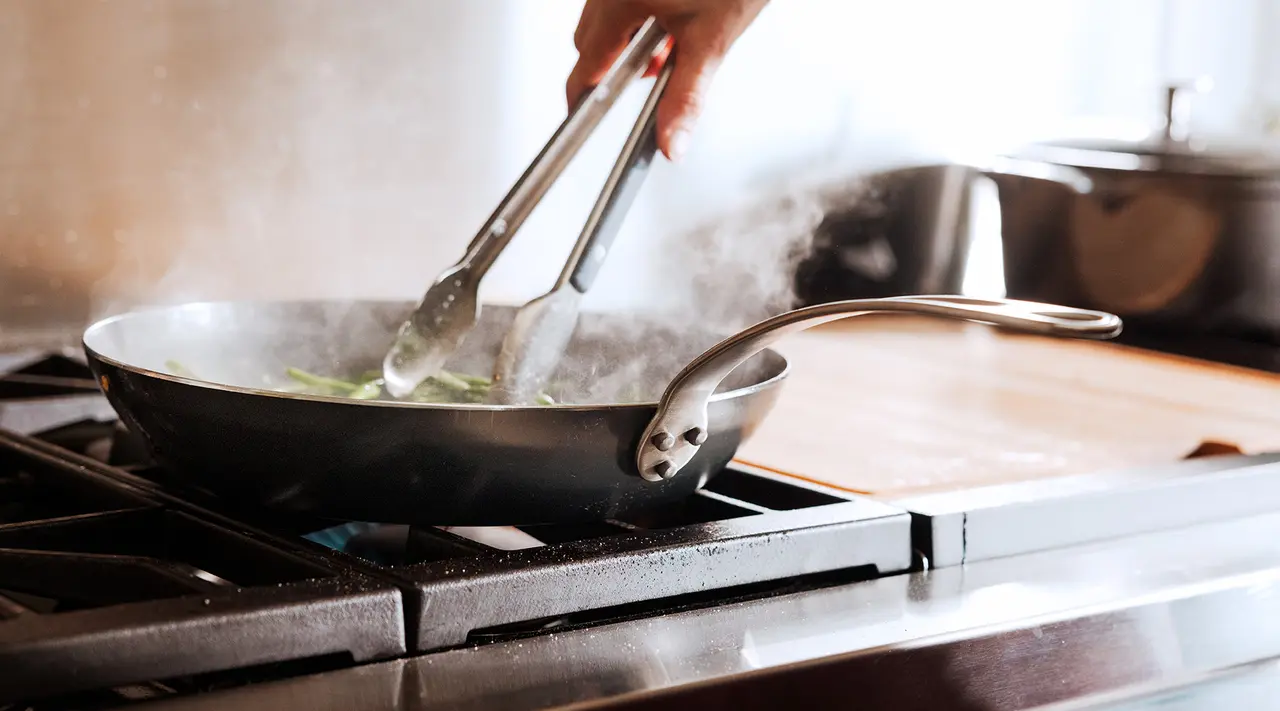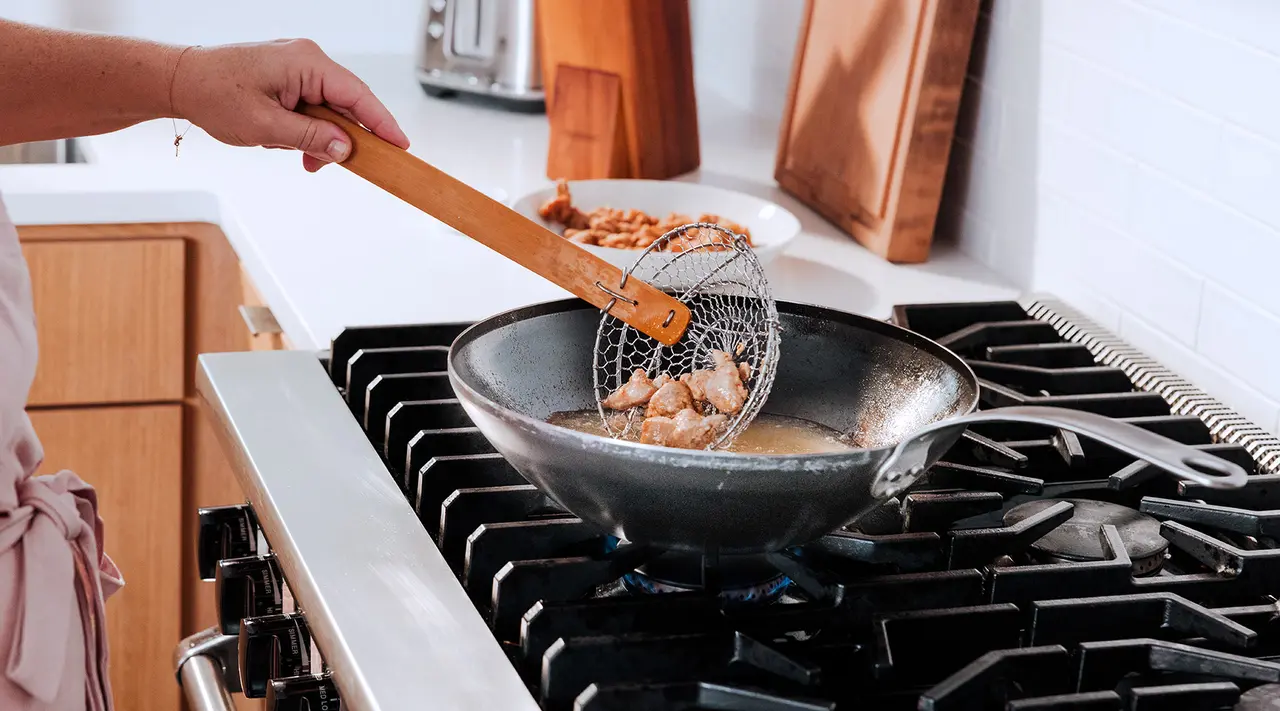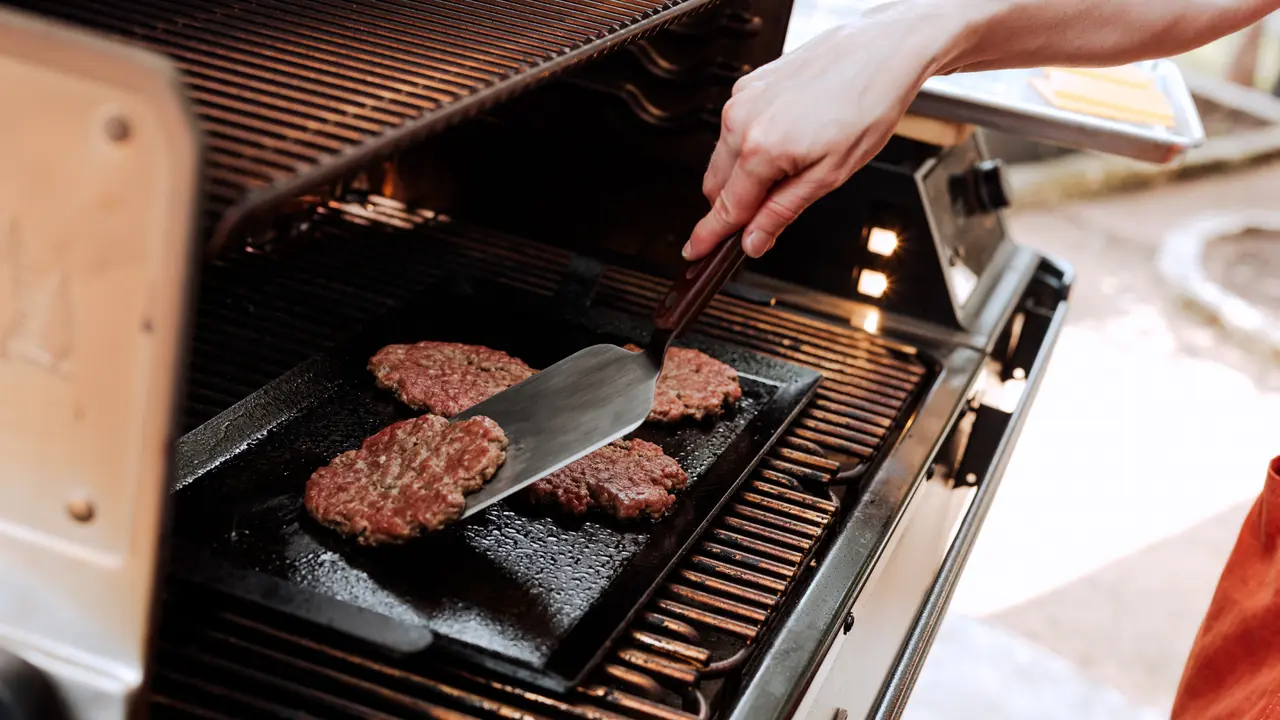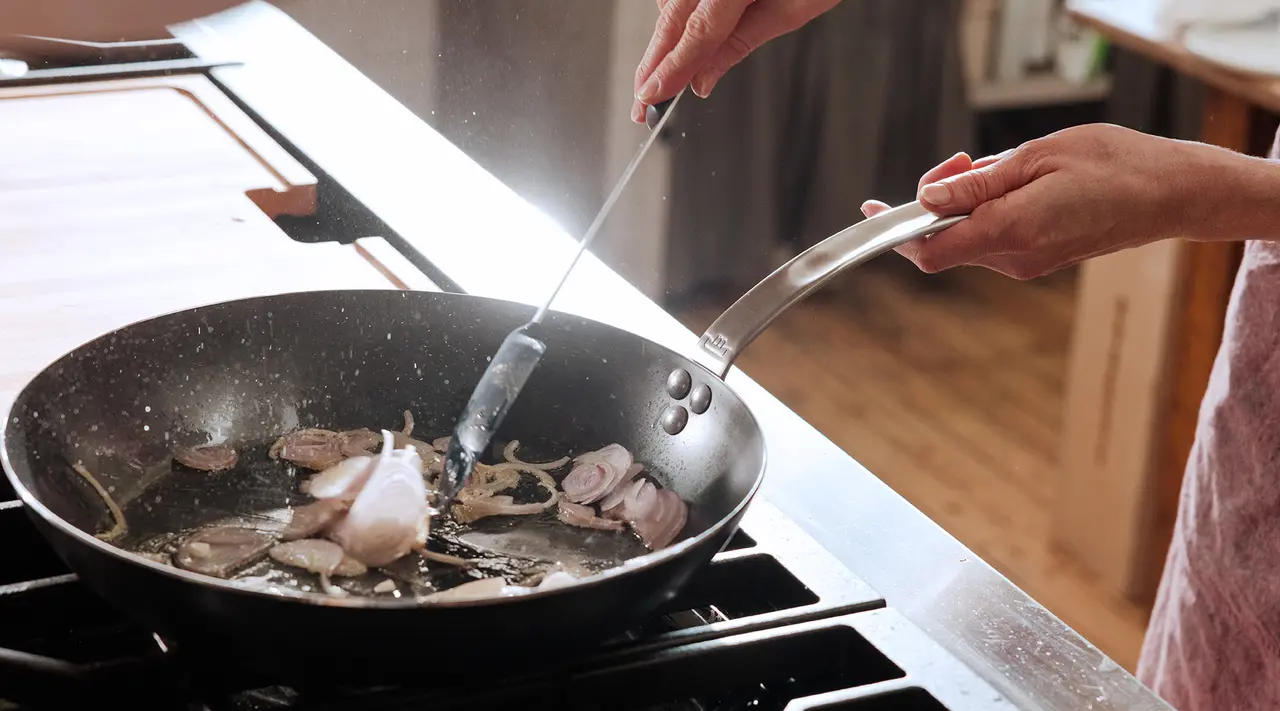Whether you’re looking for a lightweight alternative to a cast iron skillet, a coating-free non stick option, or just an all-around durable, high quality piece of cookware, carbon steel is pretty hard to beat—just ask the many thousands of professional restaurant cooks who use them on a daily basis. And if you needed another selling point: Carbon steel is totally safe and toxin-free.
Here’s why—and how you can make it even safer for yourself.
What Is Carbon Steel?

Carbon steel is made from just two ingredients: carbon and iron (often 99% iron and 1% carbon, like ours). These two ingredients are melted down into an alloy, which is stamped into a single sheet and then cut and molded into shape.
Just like with cast iron, there’s no coating other than a layer of seasoning (if you buy yours preseasoned, that is), so there’s no use of chemicals like PFOA, which is often found in traditional, coated non stick pans.
Benefits of Using Carbon Steel Cookware
Carbon steel cookware checks off all the boxes when it comes to quality: it heats more quickly and evenly than cast iron; it’s versatile enough to use with most cooking methods, from roasting to sauteing to grilling; it’s incredibly long-lasting and durable; and, finally, it’s made using sustainable, eco-friendly materials.
TL;DR: We wouldn’t be going to all this effort to show how safe carbon steel is if we didn’t truly love and believe in it as a cookware material.
Safety Factors of Carbon Steel Cookware

As a non stick alternative, carbon steel is often listed alongside traditional coated non stick cookware, which—as we mentioned earlier—used to contain PFOA, a chemical linked to cancer, thyroid dysfunction, and other serious health issues. Like cast iron, however, carbon steel—a centuries-old stalwart of home and restaurant kitchens—has never contained PFOA or any other PFAS.
Also like cast iron, carbon steel can be safely heated to very high temperatures for long periods of time without any issues, such as damaged coating. This means you can use it for grilling or oven roasting, neither of which we recommend doing with non stick pans: even if your non stick is described as safe for high heat (like ours is), you should only be doing so sporadically, and for short periods of time. Carbon steel, on the other hand, can get up to 1200F and stay there for as long as you need it to.
Tips for Safe Usage and Maintenance

While carbon steel is safe to use and abuse to your heart’s content, you’ll get more out of a pan that’s been properly cleaned and maintained than one that’s been neglected. Here are a few ways to look after your pan.
Seasoning (and Reseasoning) Properly
Carbon steel is only non stick if it’s been seasoned properly, and reseasoned whenever necessary—i.e. whenever food starts to stick or the surface looks dry.
Correct Cleaning and Care
Carbon steel should always be cleaned by hand to preserve the seasoning and prevent rust: here’s how to safely tackle different levels of mess.
Avoid Common Mistakes
Most carbon steel issues are reversible, but they’re also easy to prevent. Here’s how to prevent your pan from rusting, as well as how you can avoid stripped or damaged seasoning while cooking.
For the latter, the most important thing to keep in mind is avoiding acidic ingredients like wine, citrus, tomatoes, or vinegar—since carbon steel is a reactive material, this may strip the seasoning and/or impart a metallic taste into your meal.
Ready to Shop?
Needed a bit of a push to commit to your first piece of carbon steel cookware? We hope this post did the trick. Since carbon steel is basically built for grilling and live fire cooking—e.g., our favorite things to do in the summer—now is the perfect time to pick up a Griddle, Frying Pan, or Wok from our Carbon Steel Collection.































